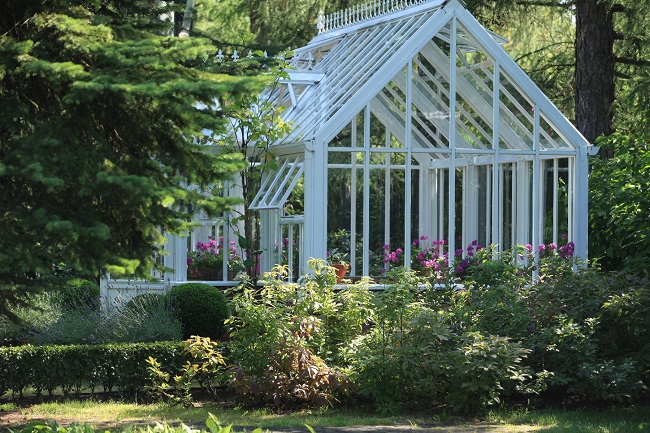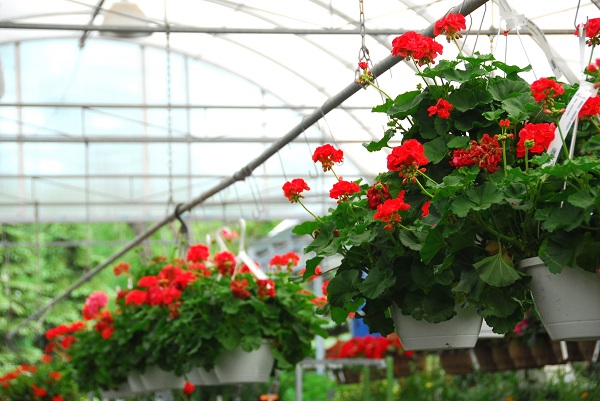
If you operate a greenhouse, the purpose of the structure should be to optimize the growth of your crops in the most efficient manner possible. While it is true that most owners concentrate on which designs are most suitable for their needs and the materials required to accommodate the design that they chose, these areas of focus will not always result in a growth structure that utilizes the least amount of energy. Regardless of design and materials, all greenhouse units will typically serve their unique purpose in creating an optimal growth environment for various types of crops.
However, the true purpose and intent of a greenhouse should not be overlooked and that is to create an optimal growing environment that not only reduces time in crop cultivation, but also saves a great deal of money.
The following 15 tips that will allow you to successfully create a high level of efficiency and energy reduction in your greenhouse.
Create a Conservation Checklist
The costs associated with high energy usage in today’s greenhouses make conservation an essential component of basic operation. According to research, the energy consumed by a greenhouse is as follows, annually:
- 75% of the Total Energy Relates to Heating and/or Cooling the Structure
- 15% of the Total Energy Relates to Providing Electricity for the Unit
- 10% of the Total Energy Relates to the Resources Required for Operation and Maintenance of the Unit
Based on these figures, it only makes sense to start with a conservation checklist that places an emphasis on those energy consumers that could result in the largest amount of savings. This means that you should focus on the ways to make climate control and electrical usage more efficient. Knowing what to focus on and where to start is the first step to making your greenhouse more efficient.
Evaluate the Structure
The second step in creating an efficient greenhouse is to evaluate the structure as a whole. This is especially important if you are focusing on climate control. Cool air or warm air has the potential to escape the greenhouse easily. If you are trying to maintain a certain temperature within the greenhouse, you should understand that the losses that you experience will vary depending upon the covering of the structure, as well as the age of the unit. If you are interested in heating the structure efficiently, you should consider using a covering composed of double polyethylene – which can reduce your heating costs by up to 50%. If you operate a glass greenhouse, you should consider retrofitting the structure with a double layer of polyethylene – which could reduce costs up to 60%.
Eliminate Air Leaks
It is imperative that you work to eliminate all air leaks associated with the structure. The main place that you should start is the door or doors of the structure. It is best to utilize a special door closing unit or even to install springs on the doors so that air does not escape the unit. You should also place weather stripping around the openings of the unit – such as the doors, windows, and vents. The stripping should also be placed around openings that are near fans. If you find holes in the siding or foundation of your greenhouse, these should be repaired immediately.
Double the Covering
Consider doubling the covering of the structure. One of the most effective and least expensive methods of doing this is to line the inside walls of the structure with bubble wrap. This provides what is referred to as a “Thermopane Effect” within the unit – which enhances the insulation within the building. If you have an older structure, simply throw a double layer of plastic over the unit and the loss of heat can be reduced by up to 50%.
Implement a Conserving Curtain
Consider implementing a conserving thermal curtain. These products will produce savings anywhere from 20% to 50%. If the cost of the curtain averages around $2.50 for each square foot, you will start to experience payback within a period of two years. If it costs less, you will experience payback sooner.
Install Insulation at the Foundation
Take the time to insulate the foundation of the unit with board that is constructed of polyurethane or of polystyrene. The board should have a thickness of one to two inches and should be placed approximately eighteen inches beneath the ground so that it assists in reducing loss of heat. By doing this, the soil that is located on the region near the sides of the structure will increase up to a total of ten degrees in the winter months.
Install Insulation at the Heat Pipes
If you are interested in increasing the amount of heat that is contained within your greenhouse, you should insulate the area behind your heating pipes. It is best to use building paper that has an aluminum face as this will assist in radiating the heat from the pipes back into the cultivation area of your greenhouse.
Consider the Location of Your Structure
In order to reduce the energy consumption of your greenhouse, you should place the structure in an area that is surrounded by trees and/or other types of structures. A lot of heat loss that occurs with growth structures is a result of the wind that the unit is subjected to over time. If you choose to place the building in an area that is sheltered, it is important to ensure that the building still receives the right amount of light so that the crops will continue to grow appropriately.
Place Windbreaks Around the Unit

The next step to optimizing the energy efficiency of a greenhouse is to place windbreaks on the north side of the building, as well as the northwest side of the structure. You could place multiple conifer trees or even a snow fence composed of plastic in these regions. This will reduce the amount of heat that is lost due to wind exposure.
Increase the Amount of Space in Your Greenhouse
One of the most productive methods for optimizing the efficiency of a greenhouse is to increase the amount of space that you utilize in the unit. By using benches that may be moved or peninsular shaped units, you can improve the amount of available space by up to 90%. If you have short crops, you may install racks that may be stacked. In addition to this, you may grow crops in baskets that may be placed on rails or overhead conveyor systems.
Perform Regular Maintenance on Your Heating System
Make sure to perform regular maintenance on your heating system. You should ensure that the boiler is running optimally and is cleaned regularly. If you have a furnace, you should have it adjusted and cleaned regularly. If you have a medium sized unit, these steps could result in saving hundreds of gallons of oil annually.
Utilize Electronic Thermostats
If you do not currently use an electronic thermostat, you should convert to an electronic model. By doing so, you will find that it is possible to save up to five hundred gallons of heating fuel annually. Additionally, installing these thermostats will result in more accurate temperature readings. It has been estimated that mechanical units often read up to two degrees higher than electronic units. Annually, this could result in hundreds of dollars in additional expenses. By switching to an electronic thermostat, you can reduce your costs and do a better in controlling the growing climate.
Install Fans
The next method for optimizing greenhouse efficiency is to install fans that produce an air flow that is horizontal.
Consider Utilizing Open-Roof Cooling Methods
If you spend a lot of money cooling your greenhouse, you should consider structure designs that are open-roof. This type of design will reduce or even eliminate the need for installing fans and high-priced cooling units.
Install Energy Lighting
Consider installing energy lighting systems. The use of incandescent bulbs and lights that are activated by motion controllers can save hundreds of dollars annually.
Related Articles & Free Email Newsletter
How to Make More Profit in the Same Amount of Growing Space
The Importance of Cleaning Your Greenhouse Before Winter




Comment here